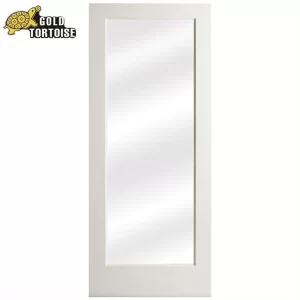An interior door skin refers to the outermost layer or surface of an interior door, which contributes to the door’s appearance and tactile qualities. The choice of door skin material plays a crucial role in achieving the desired aesthetic and performance characteristics. Common interior door skin materials include:
1. Steel Door Skin: In the case of steel doors, the door skin is made of steel. Steel door skins offer enhanced durability, security, and resistance to weather elements.
2. Fiberglass Door Skin: Fiberglass door skins are made of reinforced plastic materials, providing durability, resistance to moisture, and the ability to mimic the look of wood.
3. Wood Veneer: A thin layer of natural wood applied to the surface, providing the warm and classic look of solid wood.
4. Medium-Density Fiberboard (MDF): An engineered wood product made by combining wood fibers with resin, resulting in a smooth and uniform surface suitable for painting or applying veneers.
5. High-Density Fiberboard (HDF): Similar to MDF but with higher density, offering increased durability and strength.
6. Laminate: Layers of paper or fabric impregnated with resin and bonded to a substrate, providing a durable surface with a wide range of colors and patterns.
Each material has its unique characteristics, and the selection depends on factors such as aesthetics, budget, and maintenance preferences. Interior door skins, in combination with the overall door structure, contribute to the style and functionality of interior spaces.







